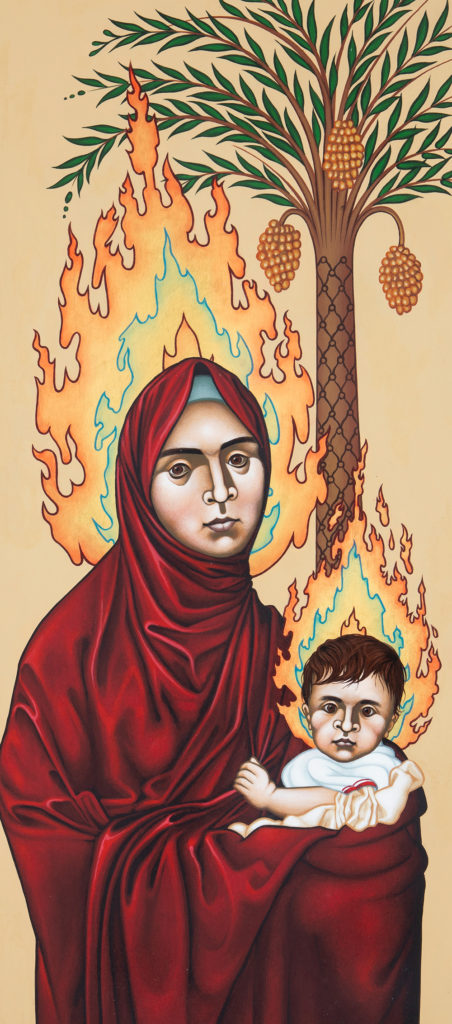Below we introduce Intersections, a new magazine section in which we invite people of non-Catholic faiths to give us a glimpse of ourselves through their eyes. In our first installment, a Muslim describes Islam’s respect for Mary, the mother of Jesus.—The Editor
Many christians are unaware of the role that the Virgin Mary plays among Muslims. It might surprise them to know that she is the only woman who is mentioned by name in the Qur’an. In fact, she is named more often in the Qur’an (34 times) than she is in the New Testament (19 times). The “House of Mary” is in Turkey, near Ephesus, where it is visited by both Muslim and Catholic pilgrims, including Pope Paul VI, St. Pope John Paul II and Pope Benedict XVI.
The 19th chapter of the Qur’an is Surah Maryam, the chapter of Mary. In that chapter, as in the Gospel of Luke, the Angel Gabriel appears to Mary to tell her that she will have a son, even though no man has touched her. When she asks how this is possible, Gabriel replies, “Your Lord says, ‘It is easy for Me, We will make him a sign for humanity and a Mercy from Us.’” That’s one of my favorite Qur’anic titles for Jesus, a sign for humanity and a mercy from God. The chapter goes on to describe Mary giving birth to Jesus under a palm tree, with ripe dates to feed her and her child.
Years ago, I worked with the Franciscans in Ohio when they wanted to tell the story of the encounter in 1219 between their founder, St. Francis of Assisi, and the Muslim sultan in Egypt during the fifth Crusade. That’s another important point for those who think that interfaith dialogue is “modern”: The Franciscans would have never existed as an order without the encounter and dialogue with Muslims. During that project, I was privileged to get to know Br. Robert Lentz, OFM, the acclaimed Franciscan icon writer. I was particularly taken with his series of Middle Eastern images of holy people, and for years we talked about the possibility of my commissioning an icon from him. This year, I was blessed with the icon that Br. Robert wrote for me, “Our Lady of the Qur’an.”

Mary is named more often in the Qur’an (34 times) than she is in the New Testament (19 times).
Mary holds her child, Jesus, in the folds of her robe, and I can see in the icon the Qur’anic story of how Mary was once criticized by some in her community who could not accept the virgin birth of Jesus. In the story, Mary points to the child, indicating that he should speak for himself. That’s one of the many miracles of Jesus in the Qur’an, that he speaks as an infant: “But they said, ‘How shall we speak to one who is still in the cradle, a little child?’ Jesus said, ‘Behold, I am God’s servant; God has given me the Book and made me a prophet. God has made me blessed, wherever I may be; and God has enjoined me to pray and to give alms so long as I live, and likewise to cherish my mother; God has not made me arrogant or unblessed. Peace be upon me the day I was born, and the day I die, and the day I am raised up alive.’” (Qur’an 19:30–35)
In the Islamic tradition, one sees flames around the heads of holy people, similar to halos in Christianity. The Arabic text at the bottom of the icon is from the Qur’an 3:42, another line that might surprise some Christians since it comes not from the Gospel of Luke, but from the Qur’an: “O Mary, surely God has elected you, purified you, and exalted you above all the women in the world.” Mary appears in the Qur’an, to Muslims, as she appears to other people across history and geography. In this way, Our Lady brings Muslims and Christians together.
Amir Hussain is professor and chair of theological studies in the LMU Bellarmine College of Liberal Arts. He is the author of “Muslims and the Making of America” and the vice president of the American Academy of Religion.
